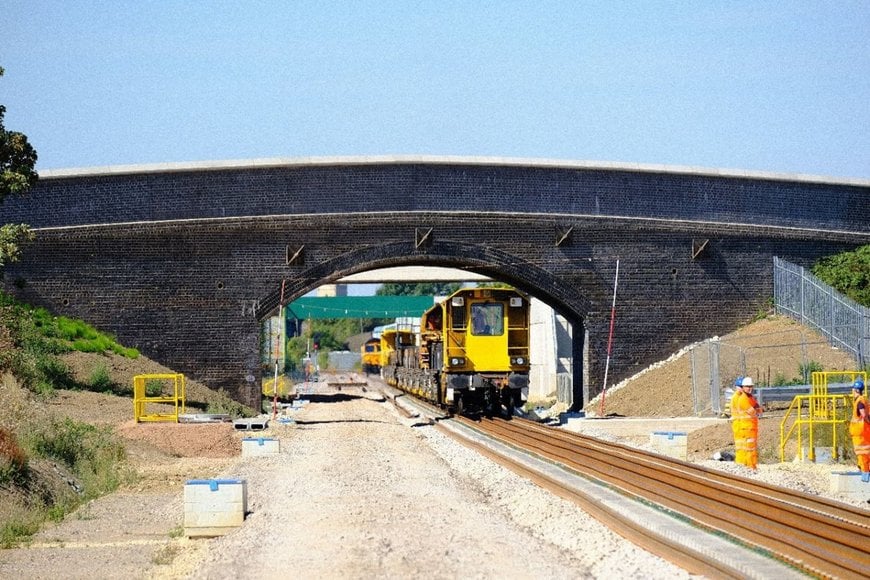railway-international.com
22
'22
Written on Modified on
East West Rail Alliance brings long welded rail train out of retirement
The East West Rail (EWR) Alliance, consisting of Atkins, Laing O’Rourke, VolkerRail and Network Rail, has brought Network Rail’s long welded rail train (LWRT) out of retirement, to help deliver one of the largest rail infrastructure projects in the UK.

To help with the delivery of Phase Two of the first stage of the EWR project, which will connect Bicester to Bletchley/Milton Keynes, the Alliance required additional support to install the large quantities of long welded rail needed to complete the projects’ complex track construction programme.
The LWRT is a simple yet surprisingly complex machine, made up of nine flat bogie wagons, each with banks of rollers on which up to 24 long-welded rails can be carried.
Working with supply chain partner Clarke Chapman Facilities Management (CCFM) and Network Rail, the LWRT went through an extensive design upgrade to ensure it could meet the project’s demands, and to meet current safety standards.
Pilot trials of the train, to complete the safety approval process, were undertaken in early August, with the train being brought back into operation on Wednesday 11 August.
To date, the LWRT has helped to install over 2,592m of track, and with 94km left to install, this new, dedicated fleet resource will allow the Alliance to meet its track installation targets.
Mark James, EWR Alliance’s head of track and SP&C, commented: “Due to our midweek programme, and the quantities of long welded rail we needed to install, the LWRT was ideally suited to meet our needs.
"This has been a great example of collaboration between the EWR Alliance, Network Rail's supply chain operations team and CCFM. By bringing this train out of retirement, it gives us much greater programme resilience, meaning where we need to, we can have two sets of rail carriers loaded up, providing us with more flexibility with our rail drops."
Jamie Denney-Clarke, Network Rail’s business support manager, said: “Due to large quantities of long welded rail installation still needed on site, and to help reduce the reliance on the rail delivery train (RDT) fleet, in which there is limited capacity in the national plan, Network Rail offered to support the EWR alliance’s midweek track construction programme by reintroducing the LWRT.
“The train was originally retired due to a lack of working at height protection, required when unloading rails on site, but the team found a new solution to protect against this risk.
“I am incredibly proud of all the hard work from everyone within our supply chain operations team, CCFM and the Alliance for making this happen.”
East West Rail Phase Two is part of the wider East West Rail project, which will establish vital transport connections between Oxford and Cambridge for the first time in over 50 years once complete.
www.volkerrail.com

